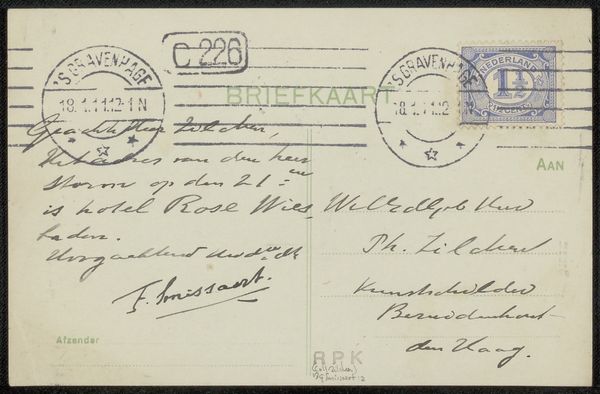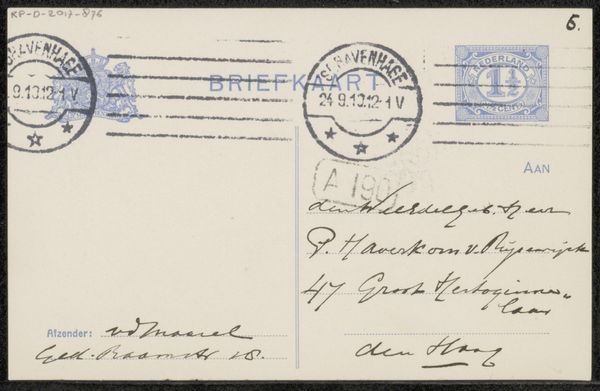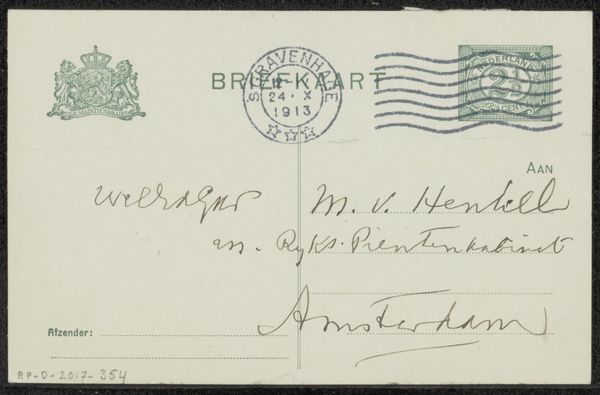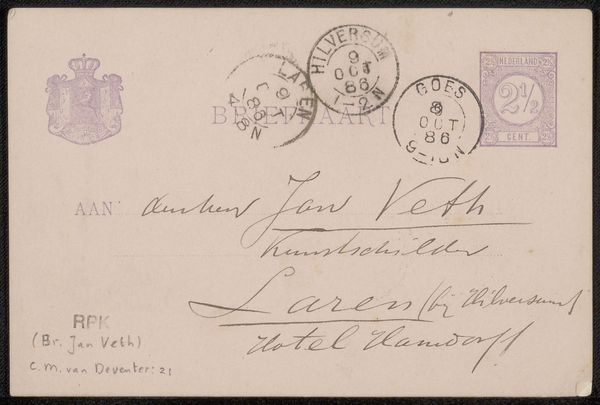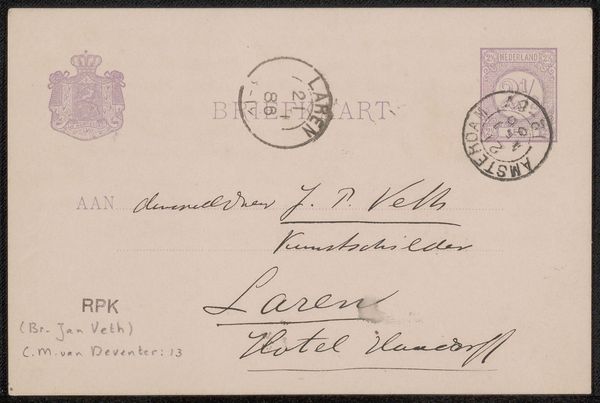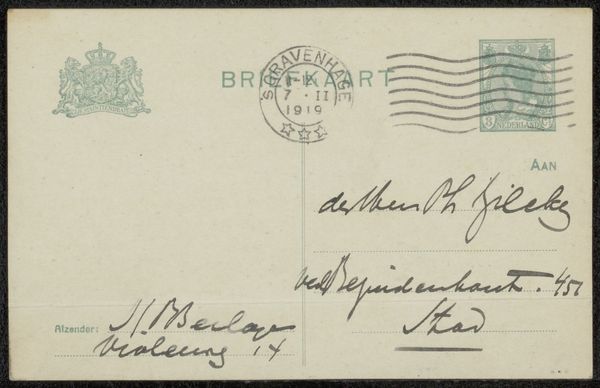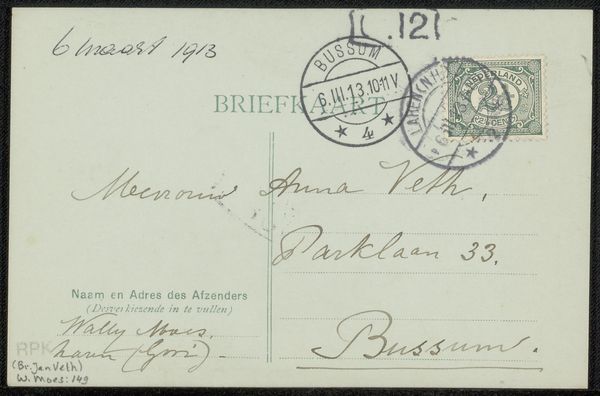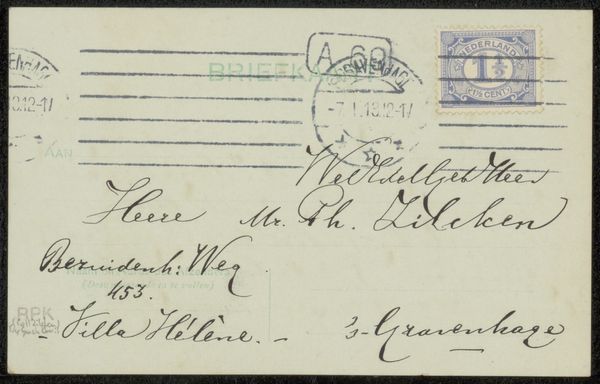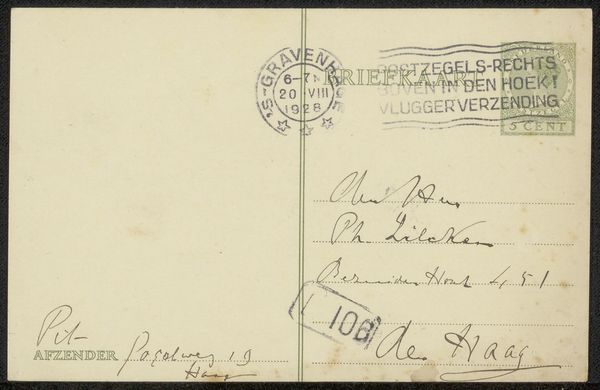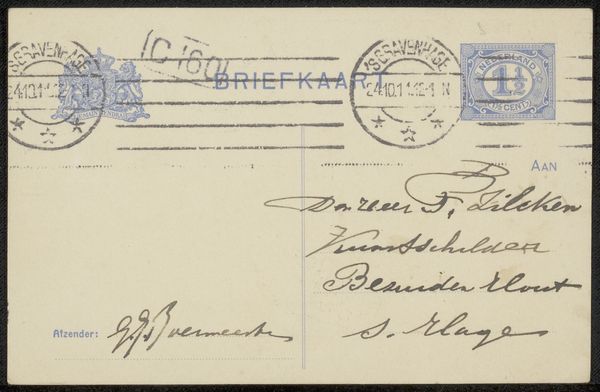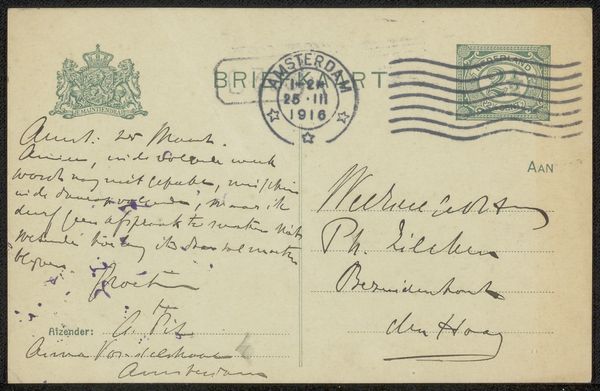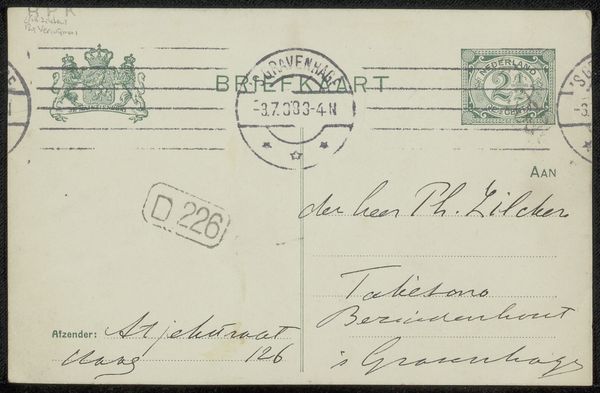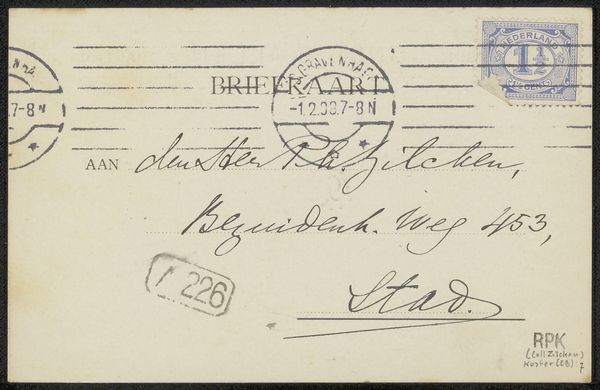
drawing, print, paper, ink
drawing
hand drawn type
paper
personal sketchbook
ink
Copyright: Rijks Museum: Open Domain
Curator: Here we have Jozef Israëls' "Briefkaart aan Jan Gerard Smits," likely from 1908, residing in the Rijksmuseum. Editor: It's immediately intimate, a small, unassuming fragment hinting at a larger connection. The handwritten quality—the way the ink bleeds slightly into the paper—gives it a really personal feel. Curator: Absolutely. Consider the means: a simple pre-printed postal card, transformed into a direct line of communication between two artists, sketched perhaps with pen and ink readily available. Editor: It’s fascinating to think about what wasn't included—what thoughts and feelings remained unspoken within the bounds of that small card, mailed from The Hague to, presumably, Smits. And how this method of direct communication might have cemented shared ideas about society, perhaps even contributing to each artist’s politics. Curator: Exactly! This postal card’s creation, tied to both utility and personal touch, blurs traditional high/low art lines. How much thought was given to the script's design, the legibility versus aesthetic flourishes, as labour, versus how it serves its purpose in communication. The choice of tools—the specific pen, the ink consistency—becomes significant. Editor: The Dutch coat of arms, along with the franking mark showing a portrait of Queen Wilhelmina of the Netherlands—what were the artists' allegiances, or perhaps conflicts, with the social and political framework around them? What power dynamics existed? We’re looking at more than just a quick note; it is evidence of access. Not everyone had access to resources needed to send a letter through the post. Curator: Precisely. The material cost, the implied literacy... it's easy to overlook the class implications embedded in this everyday object. Editor: Ultimately, I'm drawn to how such an unpretentious, practical item, delivered through the standardized process of postal service, captures these hidden elements of artistic friendship within a defined place and era. Curator: Yes, it's a subtle reminder of the dense materiality and context that underpin all artistic exchange and networks.
Comments
No comments
Be the first to comment and join the conversation on the ultimate creative platform.
